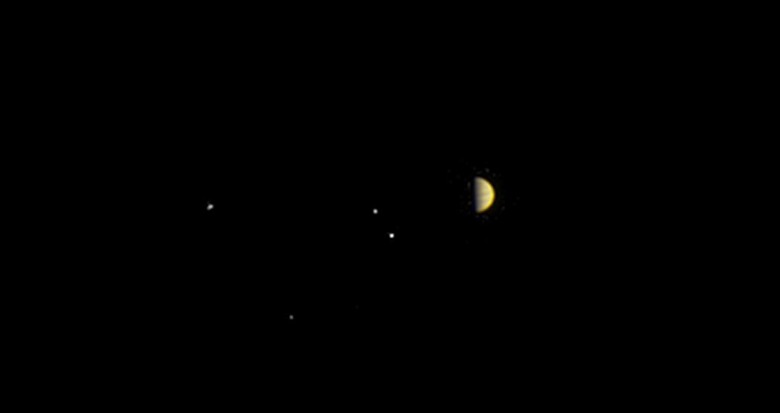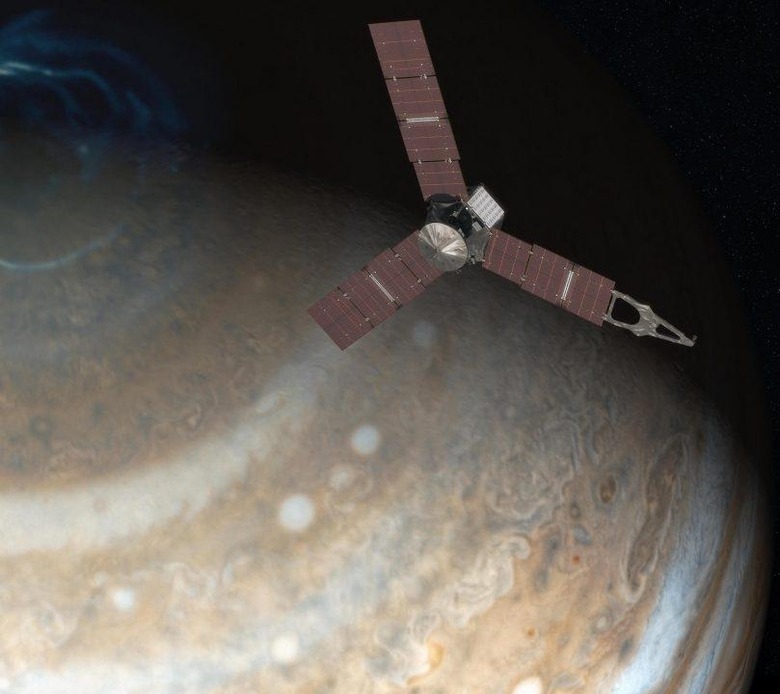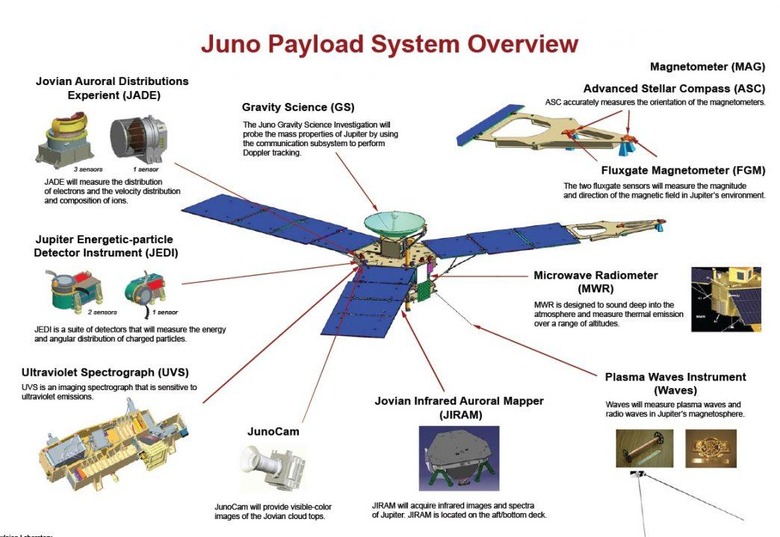As Crunch Day Nears, NASA's Juno Beams Home Stunning Jupiter Photo
NASA's Juno mission to Jupiter may still be a week out from the distant planet, but it's already sending back unique images of the gas giant. The probe isn't expected to reach Jupiter until July 4th, but has been beaming back early photography as it makes its final approach, including hitherto-unseen angles of not only the planet but its four largest moons, too.
In one shot shared by NASA, taken on June 21, even though Juno was still 6.8 million miles away the quartet of Io, Europa, Ganymede, and Callisto were all visible. Though Jupiter itself is still smaller than a coin, its distinctive banding is already coming into view.

While it won't be the first time we've seen Jupiter up-close, the Juno mission is fairly unusual in one way.
Its flight plan will bring it in over the north pole of the planet, rather than the lower latitudes of previous missions. They gave us a better view of the equatorial area, but Juno will expand our knowledge of much different parts of Jupiter.
Transmissions from Juno went 24/7 on June 11, as the team at the Jet Propulsion Lab at NASA began preparations for the most important part of the trip since it began five years ago, on August 5, 2011.

That's the final burn to place Juno into orbit around Jupiter. The software instructions for that were uploaded on June 20, and at the same time the protective cover around the spacecraft's main engine – closed all this time, to keep it safe from dust and debris – was retracted.
Tomorrow, NASA will pressurize the propulsion system.
Juno isn't short on scientific equipment, though much of it will only be deployed when the spacecraft actually reaches the planet. This new photo was snapped with JunoCam, really intended for high-resolution shots of atmospheric features when Juno gets to Jupiter, but equally capable of grabbing a picture of the approach.

Like the rest of the equipment considered non-essential for the orbital approach, however, JunoCam will be powered down on Wednesday.
"If it doesn't help us get into orbit, it is shut down," Scott Bolton, Juno's principal investigator from the Southwest Research Institute in San Antonio, said of the mass switch-off of the scientific payload.
"That is how critical this rocket burn is. And while we will not be getting images as we make our final approach to the planet, we have some interesting pictures of what Jupiter and its moons look like from five-plus million miles away."
Assuming all goes to plan, the scientific tech will be rebooted two days after a successful orbit has been established, and the first images – the highest-resolution ever seen of Jupiter – will begin filtering through to NASA in late August or early September.
